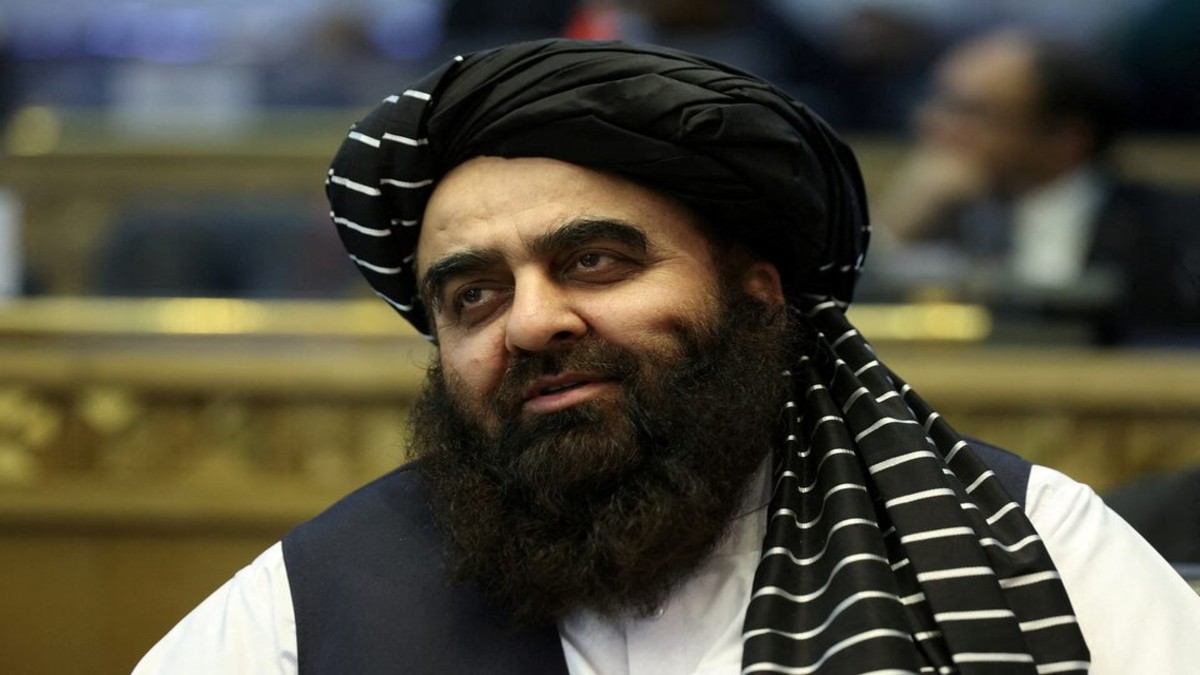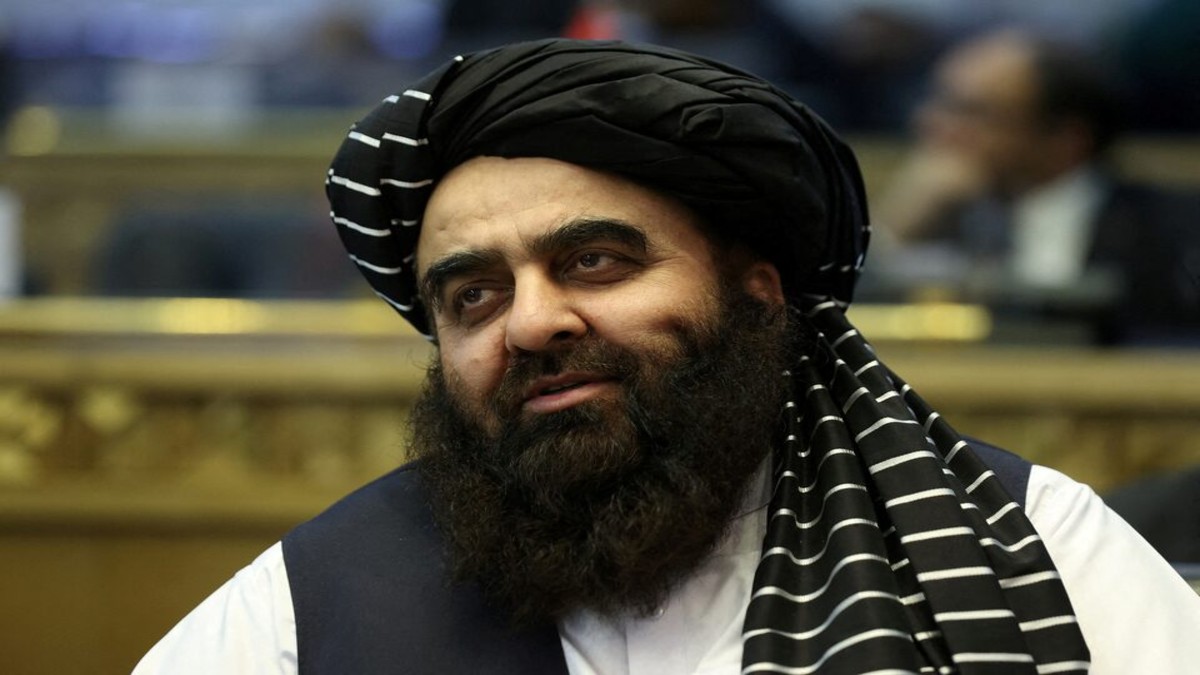June 1, 2025, revolutionised drone warfare. By mastering drone technology and innovation, a nation with a global firepower index of 20 out of 145 inflicted devastating damage on a much superior country ranked 2nd.
Operation Spider’s Web, a covert drone attack by Ukraine’s internal security service, SBU, wreaked havoc at five Russian air bases—Belaya, Dyagilevo, Ivanovo Severny, Olenya and Ukrainka.
Ukrainian military assets deployed: 117 OSA first-person view (FPV) quadcopters, used for search, detection or kamikaze and bombing missions. Take-off weight 5 kg, payload capacity 3.3 kg, flight time 15 minutes, maximum speed 150 km/h and combat radius 25 km. Payload, a shaped charge, high-explosive charge, fragmentation-explosive charge and thermobaric charge with either kamikaze or drop option. Cost $500-$1,000.
Russian military assets destroyed: The SBU claimed to have hit 41 Russian military aircraft, including Tu-160, Tu-95 and Tu-22M strategic nuclear-capable bombers, and an A-50 airborne early warning and control aircraft. However, according to a US estimate, only 20 aircraft, not any Tu-160, were hit with 10 destroyed. The estimated loss in billions.
The contrast between the cheap military assets deployed to destroy high-value long-range strategic bombers is not only glaring but also shows how warfare has dramatically evolved, where an inferior nation can cause unimaginable damage to its far superior aggressor.
The audacious attack was also about ingenuity in utilising drones. The quadcopters were smuggled inside wooden cabins that were transported on flatbed trucks with open roofs. Once the trucks were deep inside Russia, Ukrainian pilots launched the drones using an open-source software that used ‘dead reckoning’ instead of satellite navigation to avoid jamming.
US wakes up to drone reality
In July, US Vice Chief of Staff of the Army, General James Mingus, compared drones to IEDs, the biggest threat faced by American forces in Iraq and Afghanistan 20 years ago.
Stating that a drone “is our IED of today”, he said, “If it’s a piece of technology that moves faster than the traditional budgetary cycle, we need to look at how we make agility and agile funding part of how we do this.”
The same month, the Pentagon set up a joint interagency task force to spend more on drone warfare.
A memo issued by defence secretary Pete Hegseth to senior officers a few days later outlined a plan to expedite the adoption of drones.
“Drone technology is advancing so rapidly. Our major risk is risk-avoidance. Next year, I expect to see this capability integrated into all relevant combat training, including force-on-force drone wars,” Hegseth wrote.
America has realised the cost-effectiveness ratio in drone warfare.
The American MIM-104 Phased Array Tracking Radar for Intercept on Target (Patriot) missile defence battery, the core of Ukrainian air defence, costs more than $1 billion. The Patriot Advanced Capability-3 Missile Segment Enhancement, the latest version used by Ukraine, has eight launchers with 16 missiles each costing up to $4 million. In July 2024, Russia claimed to have destroyed two Patriot batteries.
On the other hand, the Iranian Shahed-131/136, a loitering munition (kamikaze) which is the main Russian attack drone, costs only $50,000. After a $1.75 billion deal with Iran to produce Shaheds domestically, Russia manufactures more than 6,000 such drones monthly.
When Russia launches hundreds of drones and several missiles against Ukraine, using Patriots is useless and very expensive.
America’s deadliest drone is the MQ-9 Reaper, used to eliminate several high-value targets, like Iran’s Islamic Revolutionary Guard Corps’ Quds Force Commander Qassem Soleimani in Baghdad on January 3, 2020, and al Qaeda chief Ayman al-Zawahiri in Kabul on July 31, 2022.
A terrifying weapon, along with its earlier version, the MQ-1 Predator, during the Global War on Terror, the Reaper’s specifications are impressive—but they aren’t suitable for a drone war.
With a length of 36 ft, wingspan around 65 ft, height 12 ft 6 in, maximum take-off weight 4,760 kg, payload 1,700 kg, range 1,900 km, operational altitude 25,000 ft and endurance 27 hours (depending on versions), it is too heavy and expensive (at least, $30 million).
The Reaper, the first long-endurance, hunter/killer-reconnaissance drone, can carry eight AGM-114 Hellfire missiles, GBU-12 Paveway II laser-guided bombs, GBU-38 JDAMs, AIM-9X Sidewinder Block 2 missiles and the British Brimstone missiles. In most targeted assassinations, the AGM-114 Hellfire missile was used. One unit, depending on configuration and sale, costs $70,000-$150,000.
The Reaper’s ineffectiveness in an all-out war was proved when Houthi rebels shot down, at least, 15 of them, using Soviet-made SA-2 and SA-6 missiles between October 2023 and April this year.
On the other hand, an FPV kamikaze drone costs less than an artillery shell and has greater accuracy. Such drones can destroy expensive artillery guns or tanks worth millions.
It’s not that the US doesn’t have light attack drones.
When Russia attacked Ukraine, Washington supplied the Phoenix Ghost family of kamikaze drones to Kyiv. The Dominator, a member of the family, is an unmanned aircraft system capable of intelligence, surveillance and reconnaissance (ISR) and relaying communications. It has a range of 500 km, endurance of five hours, a weight of 45 kg and a payload of 17 kg.
The US supplied several other types of kamikaze and traditional combat drones to Ukraine.
Switchblade 600, another kamikaze drone, has a range of more than 40 km, 40-plus minutes of endurance and an anti-armour warhead weighing almost 30 kg.
Altius-600, another loitering munition, has a range of 440 km and can operate for more than four hours and carry a mission-specific payload—ISR, electronic warfare or kinetic—of 3.17 kg.
The JUMP 20, an ISR and traditional combat drone, can fly up to 185 km, in the air for 14 hours and carry a payload of 13.6 kg.
Several other UAVs that the US supplied were Black Hornet, Scan Eagle, Penguin, Raven, Puma and Cyberlux K8.
However, the US severely lags in the rapid and mass production of inexpensive, suicide drones.
Unmanned warfare isn’t the future, it’s the present—Ukraine realised it even as top American arms manufacturers continued to rely on heavy and expensive jets, missiles and tanks.
Shockingly, the world’s most powerful military neither has the know-how to counter drones nor can it produce such cheap yet effective UAVs.
Despite launching the Replicator Initiative in August 2023 to focus on manufacturing cheap yet powerful drones, the US allocated only $500 million to the programme. In September 2024, the Replicator 2 was launched.
US faces Russian and Chinese threats
The US faces the drone threat beyond the Ukraine War.
The first threat is the Russian drone violation of NATO airspace—Poland, Romania, Denmark, Norway, Finland, Latvia, Lithuania and Germany—last month.
Like the US, the military alliance is also unprepared for a drone war and was caught with its pants down after the Russian airspace violation. In some of the instances, NATO had to scramble warplanes that cost millions to counter the Russian drones.
Though Russia denied having violated NATO airspace, it was evident that Vladimir Putin had openly challenged NATO.
EU members in eastern Europe last month agreed to build a “drone wall” with advanced detection, tracking and interception after the Russian drone incursions. Poland, Romania, Denmark, Estonia, Bulgaria, Finland, Latvia, Lithuania, Hungary and Slovakia agreed to have “intensive” discussions on “a detailed conceptual and technical road map” this month. However, it could take a year to build a drone wall.
Russia, like Ukraine, has also innovated its UAVs. Though the chances of Russia attacking a NATO member using drones are almost nil, the threat remains.
Russian troops are gradually achieving partial Battlefield Air Interdiction (BAI) success. BAI is an air attack on enemy assets in the battle area but not in direct contact with friendly forces to delay, disrupt or destroy enemy military potential before it can be used against friendly forces.
According to an Institute for the Study of War (ISW) report, “increased FPV flight ranges, use of limited artificial intelligence (AI)/machine learning (ML) capabilities, the proliferation of fibre optic UAVs, the integration of thermobaric warheads and the fielding of sleeper drones” have helped Russia target Ukrainian logistics, defensive positions and military-industrial infrastructure.
Drones with extended ranges strike Ukrainian ground lines of communication (GLOCs) and military infrastructure deeper in the rear. For instance, the Molniya fixed-wing FPV drone can now fly up to 50 km compared to 15 km earlier.
Russia has also equipped its medium-range reconnaissance and strike drones with AI/ML capabilities, longer-lasting charges and increased resistance to electronic warfare (EW) interference.
Orlan-10 and Orlan-30 reconnaissance UAVs can now fly for 10 hours at an altitude of up to 6 km and 120 km deep into the rear. While the less sophisticated ZALA and Supercam reconnaissance drones fly at shorter distances and altitudes, undetected by thermal imagers, to locate Ukrainian personnel and equipment, ISW said.
The Chernika-2 lightweight “flying wing” UAV has been modified to carry a larger 3.5 kg warhead, fly up to 100 km and is fitted with an AI/ML-powered optical navigation system, enabling it to destroy dugouts and heavy military equipment at a greater distance and defeat Ukrainian jamming.
Russia’s modified fibre optic drones, which can now fly up to 20 km, carry a 1.5-3 kg payload and are resistant to EW interference, have hit Ukrainian armoured equipment and GLOCs.
Russia is also using fibre optic-controlled sleeper drones, which operate on the ground in a low-power standby mode for extended periods on rooftops, hilltops and roads and are remotely activated to launch a surprise precision strike.
Russia has also integrated thermobaric warheads into Molniya-2 and Lancet drones to destroy Ukrainian trenches and fortifications, per the ISW.
The second threat the US faces is China in the Indo-Pacific.
In a war with China, especially over Taiwan, American bases and assets, like those in Japan and on Guam, will not only be targeted by Chinese MRBMs and IRBMs but also by drones.
China has already started testing ISR drone swarms—multiple UAVs that operate as a single, coordinated and autonomous unit using swarm intelligence to achieve a common objective—for amphibious landing and island-blocking, in case, it attacks Taiwan. The high-altitude, long-endurance Jiu Tian SS-UAV can release 100-150 smaller kamikaze drones.
China can produce 500,000 FPV drones monthly and increase production to 700,000 during a war. Chinese civilian manufacturers can produce one billion armed drones annually.
Unlike the US Reaper drone, China’s latest heavy reconnaissance/combat UAV is stealth and can take off from warships. The GJ-11 can fly up to 1,110 km, stay in air for 6 hours and has a payload of 1,200 kg. The drone was designed primarily to target US bases and assets in the Indo-Pacific.
Another Chinese stealth reconnaissance/attack drone is the CH-9, the latest member of the CH (Caihong, or Rainbow) family of drones, which can fly up to 11,500 km, stay in the air for 40 hours and carry 490 kg of ammunition.
The top 10 Chinese drones are HN-HP150, VF80P, CH-5 Rainbow, Wing Loong II, GJ-11, BZK-005, WZ-8, CH-7, Scorpion and Sky Hawk. Every drone has some unique and common features: some carry precision-guided munitions and laser-guided bombs capable of deep strikes, are capable of surveillance and jamming equipment, are stealth, can conduct ISR or EW missions or take off from aircraft carriers.
Ukraine drone teach only hope for US
After more than 3.5 years since the war started, Ukraine’s drone (the modern IED) strikes comprise around 80 per cent of all Ukrainian attacks against Russia.
Ukraine’s monthly drone production has galloped by 900 per cent from 20,000 in 2024 to 200,000-plus this year, according to the US nonprofit organisation Atlantic Council. The annual production is around 4,000,000, including long-range attack drones that can hit targets around 1,600 km inside Russia.
Ukraine can never win the war with or without NATO support, but its rapid advancement, innovation and continuous evolution in drone technology have impressed the world. Ukraine’s drone superiority against Russia has evoked immense interest in the US military.
A high-level Ukrainian delegation led by deputy defence minister Serhii Boiev visited the US last week regarding a drone deal proposed by President Volodymyr Zelenskiy in July. “The American team noted Ukraine’s expertise in developing the drone industry—the production of not only UAVs but also sea drones and ground robotic complexes,” according to Ukraine’s defence ministry.
Ukraine wanted $90 billion worth of American weapons, including long-range missiles, in exchange for selling battle-tested drones to the Donald Trump administration or providing the technology in exchange for royalties or setting up a domestic company subsidiary in the US. Ukraine has around 300 drone-producing companies, per the Association of Ukrainian Defence Manufacturers.
Under the deal, Ukraine will produce 10,000,000 drones annually for five years for $50 billion. Though it could take months to finalise the deal, the Pentagon has realised the importance of Ukraine’s superiority in drone technology and seeks to use it at the earliest.
Realising the importance of drone warfare, Ukraine—which has specialised drone units—has provided an attack drone company and artillery-spotting and bomb-dropping drones to every assault battalion. Every mechanised battalion has artillery-spotting and FPV drones.
Ukraine has rapidly innovated its drone technology in response to changing battlefield conditions—cheap and effective yet evolving.
For example, when Russian EW systems started detecting long-range drones, Ukraine devised a way by flying them in frequencies least used by Russia. Detecting drones flying on constantly shifting frequencies is difficult and time-consuming.
Ukraine’s biggest advantage is that these drones are battle-tested and have proved their mettle. In September, Ukraine became the first country to unleash an autonomous drone swarm in combat.
In the latest development in drone technology, Ukraine and Russia are in a race to develop AI-guided UAVs, which will identify and lock onto their targets without communicating with their pilots. Such drones can’t be jammed.
The list of top Ukrainian drones is impressive.
Punisher, a silent and stealthy reconnaissance/attack/search-and-rescue/logistical drone, has a range of 45 km, an endurance of 90 minutes and a payload of 2.5 kg. Resistant to jamming, it has destroyed ammunition depots and disrupted supply lines and logistics.
Baba Yaga, the Russian collective nickname for several heavy bomber multi-copters with four to eight propellers (R-18, Kazhan, Nemesis and Vampire), is a nightmare for Russia. They have a range of 10-30 km, an endurance of around 23 minutes and a payload of 15-18 kg. Often used at night, they carry mortar rounds and anti-tank mines.
For example, the R18 octocopter, resistant to EW and used to strike tanks, artillery and armoured vehicles, especially at night, can fly up to 4 km, stay in the air for 40 minutes and can deliver a payload of around 5 kg.
The UJ-25 Skyline, a high-speed, long-range kamikaze drone, has a range of 800 km, a 90-minute endurance and a payload of 10 kg. Another suicide drone, UJ-22, has the same range but an endurance of about 12 hours and carries a payload of 20 kg.
In the third strike on the Kerch Bridge, in June, Ukraine could have used one of the three underwater drones—TLK-400 (1,200 km range and 500 kg payload), TLK-1,000 (2,000 km range and 5,000 kg payload) and Marichka (1,000 km range and 1,000 kg payload). Ukraine’s another underwater is Sea Baby, designed to designed attack ships. It has a range of 1,000 km and a payload of up to 850 kg.
Ukraine has several other kamikaze drones. The long-range ones are UJ-26, AN-196, AQ-400 and Peklo. FPV kamikaze drones include Molfar, Queen Hornets, Sting and Kolibry.
The US will have a big advantage if it signs the drone deal with Ukraine. It doesn’t need to build an industrial base for manufacturing cheap, effective drones en masse.
Ukrainian drone engineers have mastered innovation as Russian battle tactics evolve. They redesign, upgrade and innovate in weeks or days on the feedback received from soldiers battling the Russian military on the frontlines. A few subsidiaries of major Ukrainian drone manufacturers, if set up in the US, will churn out low-cost and effective UAVs.
This is the first drone war, and Ukraine’s battle-tested UAVs will be of immense use to the US. More than 95 per cent of drones used in the frontlines are domestically manufactured. Moreover, America will also become aware of Russian drone tactics and innovation by tapping Ukraine’s knowledge.
NATO, particularly the US, should prepare for unmanned wars with Russia and China ahead of the West in drone technology. Ukraine is the solution.
The writer is a freelance journalist with more than two decades of experience and comments primarily on foreign affairs. He tweets as @FightTheBigots. Views expressed in the above piece are personal and solely those of the writer. They do not necessarily reflect Firstpost’s views.


)

)
)
)
)
)
)
)
)



